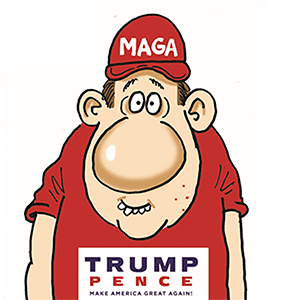Speed, selflessness and spacing: A peek into the new-look Knicks offense
Published in Basketball
NEW YORK — Mike Brown might be barking “turn on the motherf------ jets,” but this season, the only thing sprinting is his mind.
The Knicks’ new head coach, known for going viral during his Sacramento tenure for sprinting (and cursing) in practice, is taking a different approach in New York. Back then, it was part performance, part principle — a fiery demonstration meant to turn the Kings into the league’s fastest-paced team by leading from the front.
“You know, that was just dumb. It was dumb first of all. It was just a spur-of-the-moment thing. Both of my hammy’s could have been gone. Both of my Achilles could have been gone. I’m conscious of that,” Brown said with a laugh after Day 2 of Knicks training camp in Tarrytown on Thursday. “I’m 55. I know if I’m going to do something — just like this process, I’ve got to start slow and gradual. I haven’t done that yet. I don’t think I will do that. Who knows?”
Slow and gradual — for Brown, at least. Not for his players.
The Knicks may soon be defined by their tempo, and Brown is shaping that identity from the sidelines. He’s traded his sprinting shoes for a whistle, but the message is the same: play fast, play together, and push the pace with purpose.
On Wednesday, Brown lined his team up at the end of practice — and had them run for every missed free throw. Earlier, he stalked the baseline as his players drilled fast breaks: rebound, outlet, sprint, finish. No jogging allowed.
“A lot of conditioning. Getting up and down the court,” Mitchell Robinson said after practice. “[He’s] putting in a lot of new things that I never seen before, so it’s gonna be a process — but I’m all for it.”
“I’m pretty tired, I’m not gonna lie,” added Guerschon Yabusele. “But that’s what I need. First practice was pretty good. I think we got a little chemistry going on so we’re gonna be working on it especially on the details and we’re gonna work and get better.”
Speed is just the beginning.
Brown is reshaping the Knicks’ offense in real time — from a system built on isolation and Jalen Brunson’s brilliance to one grounded in movement, pace, and collective rhythm. The shift is already visible at camp, where every cut, pass, and motion carries meaning.
“Just a lot more player movement, ball movement,” Miles McBride said. “I think last year at times we got stagnant and we relied on a lot of isolation shots, which is just tough down the stretch. I think this year is going to be a little more freedom with the movement and a lot of guys cutting and getting guys getting active.”
Brown’s staples
Brown doesn’t want the Knicks playing by the book — he wants them playing by instinct.
That means moving away from rigid play calls and embracing a conceptual, read-and-react style of basketball. For it to work, every player — from the stars to the last man on the bench — must operate with the same instincts, see the same cues and trust the same principles.
That starts with what Brown calls his “staples.”
“What I mean by that is our staples are really important, starting with pace and spacing, paint touches, quick decisions, ball reversals,” he said. “Those things are extremely important to us.”
Drill the staples first. Then come the “automatics.”
“[Those are] basically reads where if the ball goes this way or bodies go that way, that tells the next player, ‘you got to go this way or that way,’” he explained.
Conceptual basketball is organized chaos: no set calls, no telegraphed actions — just a shared language of movement. To Brown, it’s a competitive advantage.
“Because the defense doesn’t know what’s coming. You have a couple of options you can do every time the ball moves or somebody else moves, and it’s your choice,” he said. “And if you’re doing it with pace and the floor spaced very well, we become hard to guard.”
That’s the goal — but it’s not immediate.
Day 1 of camp was about laying the foundation: getting familiar with the staples. Day 2 was about building on it — fast. Running too slow up the court on a fast break? Brown’s whistle sounds and the drill starts over. Not trailing as a floor-spacing big? Rim-run as hard as you can — or, you guessed it, Brown’s whistle blows and the drill starts over.
“It’s our philosophy,” Brown said. “We feel like it’s worked in the past. It can help anybody — especially when you have a group like we have here that’s talented and multi-dimensional.”
There’s a natural edge to playing fast — and the Knicks, who too often fell behind the pace last season, know it.
“Playing fast is gonna help us get to another level,” Josh Hart said. “When you’ve got guys like Mikal [Bridges] and OG [Anunoby], who can play very good off the catch, getting them into transition and getting them into position where they can attack the basket and [make plays] … it causes the defense to collapse, which gives Jalen and KAT [Karl-Anthony Towns] more space. So the ability to play fast is gonna help us a lot.
“And when you do that, the ball is moving. Everyone is happy. The ball finds energy. We do that, obviously it trickles into all other aspects: making sure defensively we’re there and communicating and those kinds of things. So I think it’s gonna help a lot.”
Changing roles
Speed is one staple. Selflessness is another.
Under Brown, the ball won’t stick — which was one of the biggest criticisms of the offense placed on Brunson’s shoulders.
The All-Star point guard led the NBA in dribbles, touches and time of possession last season. That won’t happen again — by design. Brown wants Brunson off the ball more early in games, not to limit his impact, but to preserve it — keeping him fresh for the final stretch, where he thrives as the league’s reigning Clutch Player of the Year.
“I’ve always been in different roles throughout my career, even in college,” Brunson said. “When I lock in on a role, figure out how I’m going to be best with it, I’ve done pretty well with it. We’ve got to obviously be willing to adapt, be willing to change, figure how we’re going to be the best team possible moving forward. If you want to win, you’ll do it. It’s that simple.”
The selflessness doesn’t stop there.
Brown is also reimagining how Karl-Anthony Towns is used within the offense. While Towns posted strong counting stats in his first season in New York, many of his touches came at the top of the floor in pick-and-pop sets. His post-ups came in flashes. His playmaking flashed even less.
That’s changing.
“We don’t want to keep him at the trail spot or the top of the floor all the time,” said Brown. “We want to move him around — to the weak corner, strong corner, weak wing, sometimes as the push man offensively. And when he is at the five, we feel he is a really good passer.
“So sometimes he’ll be at the rim, sometimes he’ll be at the elbow. And when he’s at the elbow, that’s when he’s going to be in a big decision-making role. And we feel like he’s more than capable of making great decisions with the basketball.”
Speed, selflessness and don’t forget the spacing. With eight core rotation players not named Robinson boasting multiple seasons of above-average 3-point shooting, the Knicks are built to stretch the floor. If Landry Shamet and Malcolm Brogdon crack the opening-night roster, that’s 10 of 11 who can’t be left alone on the perimeter.
Brown may not be sprinting up and down the sideline anymore, but make no mistake: his fast-paced, read-and-react offense is running full speed in New York.
And the Knicks are all in.
“It’s a process, it’s gonna take a while, always look at this thing as a marathon, it’s not a sprint,” Brown added. “So we’ll keep building on it while trying to sprinkle in a few new things on both sides of the floor here and there.”
©2025 New York Daily News. Visit nydailynews.com. Distributed by Tribune Content Agency, LLC.






Comments